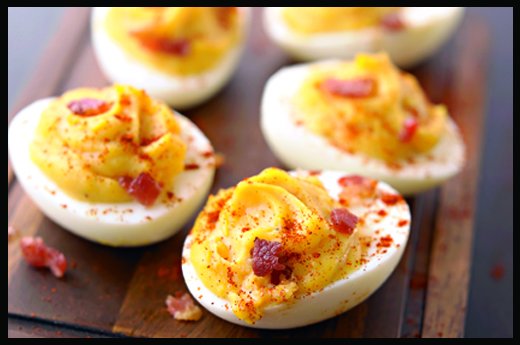The foods we eat have a huge impact on our emotional well-being. Some foods can give you a sharper, more energized, happier brain, while others tank your mood and your health. Because, let’s face it, most of our food is not brain food. And, quite frankly, a lot of times the food we eat isn’t really food at all, but a poor excuse for sustenance created in a factory on the other side of the planet. We call this the Modern American Diet (MAD), and what science says about it is clear: Food has radically changed from the nutritional environment in which our brains evolved.
We decided to write our book, The Happiness Diet, as a way of letting everyone know that simple shifts in our diet can have enormous effects on how much enjoyment we get out of life. And of course, it’s easy for us to say that we should be eating more whole foods and fewer fake foods. But we also want to prove this to you with the latest research available to show you that eating right can not only make you happier, but it can also slash your risk of diseases like depression, attention-deficient hyperactivity disorder (ADHD), and Alzheimer’s.
Here’s a tiny sampling of what research is saying about the Modern American Diet and what it’s doing to our bodies:
- A study of 3486 middle-aged women found that those eating the most “whole foods” like fish, vegetables, and fruit were 26 percent less likely to get depressed, while those eating the most “processed food,” such as sweets, fried food, processed meats, and refined carbohydrates, were 58 percent more likely to be depressed.
- Examining the dietary habits of 1046 women, researchers found that a “traditional” diet of fish, beef, lamb, and vegetables was associated with lower odds of depression and anxiety, while a “Western” diet of pizza, chips, fried foods, refined grains, and sugary products increased those odds significantly.
- A study of 7,114 adolescents ages 10 to 14 showed that those who ate the least-healthy diets were 79 percent more likely to be symptomatically depressed, compared to those with the healthiest diets.
The bottom line: bad food = bad mood. And it absolutely is possible to become happier by shifting your diet. In fact, it’s not only possible, but science is telling us that if we eat the right foods we will build better brains and be happier, too. So, for our first blog post for Maria’s Farm Country Kitchen, we want to present you with a few of the most important nutrients for brain health (we call them the Essential Elements of Happiness), and the top three are: vitamin B12, iodine, and magnesium. So, in the spirit of the holidays, we’re calling out which holiday foods are bursting with the elements of happiness. That’s right, Holiday Good Mood Foods!
Beef tenderloin, clams casino, and deviled eggs.
All are high in essential element of happiness #1: vitamin B12. You can’t make brain cells without this vitamin. Low B12 causes irritability, depression, and cognitive decline. You’ll find high concentrations of B12 in cows, goats, and other ruminant animals, as well as in fish and shellfish. Our stomachs make a special protein called intrinsic factor to help us absorb B12 from our food. But thanks to a host of factors related to modern life, it’s difficult to get enough of this essential element into our bodies. One of the biggest problems is that most processed foods are fortified with folic acid, which masks B12 deficiency, additional signs of which are aggression, obsessive-compulsive behavior, sleeplessness, and tingling in the arms and legs. Alcohol also leaches B12 from the body, and antacids block B12 absorption. Long-term effects of B12 deficiency include heart disease, cancer, and Alzheimer’s. Vegans and vegetarians, of course, risk deficiency. While the ethical decision of not eating meat is laudable, many plant eaters who return to meat report a big boost in mood that is likely related to B12. (It’s also important to note that supplementation of B12—like supplementing vitamin E, folic acid, and other nutrients—has been linked to an increased rate of cancer and death, so it’s best to get these essential elements from food, not pills.)
BEST SOURCES: Shellfish, fish, liver, beef, eggs.
Crab cakes, shrimp cocktail, and eggnog.
All are high in essential element of happiness #2: iodine. Every animal needs iodine for life, and it can only be obtained through diet. Iodine is essential for a healthy thyroid—the gland that regulates metabolism. An underactive thyroid is associated with low energy, poor memory, depression, ADHD, migraine, weight gain, infertility, breast disease (including cancer), infection, and heart disease. Proper brain development requires iodine; in fact, iodine deficiency is the most common cause of preventable brain damage in the world. Since the 1970s, the iodine levels in Americans have dropped in half, and convenience foods are probably partially to blame because they are packed with soy, which, although it’s touted as a health food, actually blocks iodine absorption. The result is a lot of unhappiness. Women need more iodine than men because breasts use a lot of iodine, and scientists now believe that’s why women who don’t get enough of this nutrient often have lumpy chest tissue (fibrocystic breasts) and experience extra breast pain during menstruation. While seafood is one of the richest sources of iodine, the best food for it is actually seaweed, which can sometimes contain hundreds of times more iodine than fish.
BEST SOURCES: Seaweed, fish, clams, shrimp, sardines, eggs, grass-fed meat, and milk.
Spinach dip, lox, and gingerbread cookies.
All are high in essential element of happiness #3: magnesium. This essential mineral eases your mind, nerves, and muscles. It’s used to treat depression. It also protects your brain, relaxes blood vessels, and protects against heart disease and diabetes. Increasing magnesium levels in the brain improves memory and learning, while a deficiency can lead to depression, anxiety, ADHD, insomnia, and fatigue. The USDA estimates that one-third of Americans are deficient in magnesium, while other government surveys report that almost 70 percent of us don’t eat enough of this vital nutrient. Industrial farming is stripping our soil of this mineral, and the majority of our calories—refined carbs, vegetable oils, and sugar—are devoid of magnesium. Having high blood sugar increases magnesium loss from the body. To get enough of this natural antidepressant, you need to eat greens, foods such as spinach, beet greens, collard greens, broccoli, green beans, and Swiss chard. Whole grains are also high in magnesium, as are fish like halibut and wild Alaskan salmon. One of the best sources of magnesium, however, is a sugar that used to be abundant in our diet: molasses. Use it in place of table sugar in everything from coffee to baking.
BEST SOURCES: Greens leaves, whole grains, salmon, blackstrap molasses.

Tyler Graham is the coauthor of The Happiness Diet. Previously, he served as the health and environment editor of O, The Oprah Magazine, the nutrition editor at Prevention, and the environment editor at Best Life. He recently launched a men’s health section at Details magazine.





Dear Tyler,
Yum, yum and more yum! Thanks for blogging for me and justifying my holiday menu (which truly needed no justification but I appreciate it anyway). I am obsessed with molasses lately, too! Happy Holidays!
Maria
Tyler: Great post, and would love to review your book for my blog. Can I get a review copy? If so, please get in touch with me via the email I provided or on my contact page. Thanks!
Maria,
Thanks so much! And, yes, molasses is good for almost anything. Pomegranate molasses is especially delicious. Happy Holidays to you and your family!
Tyler
Hi Tyler,
Who did that study that concludes that taking supplements is not a good idea?
How challenging to weigh the pros and cons of eating meat and dairy because supplements are bad… Compared to a vegan, alkaline, anti-inflammatory diet which has strong advantages of it’s own.
Thanks,
Katie